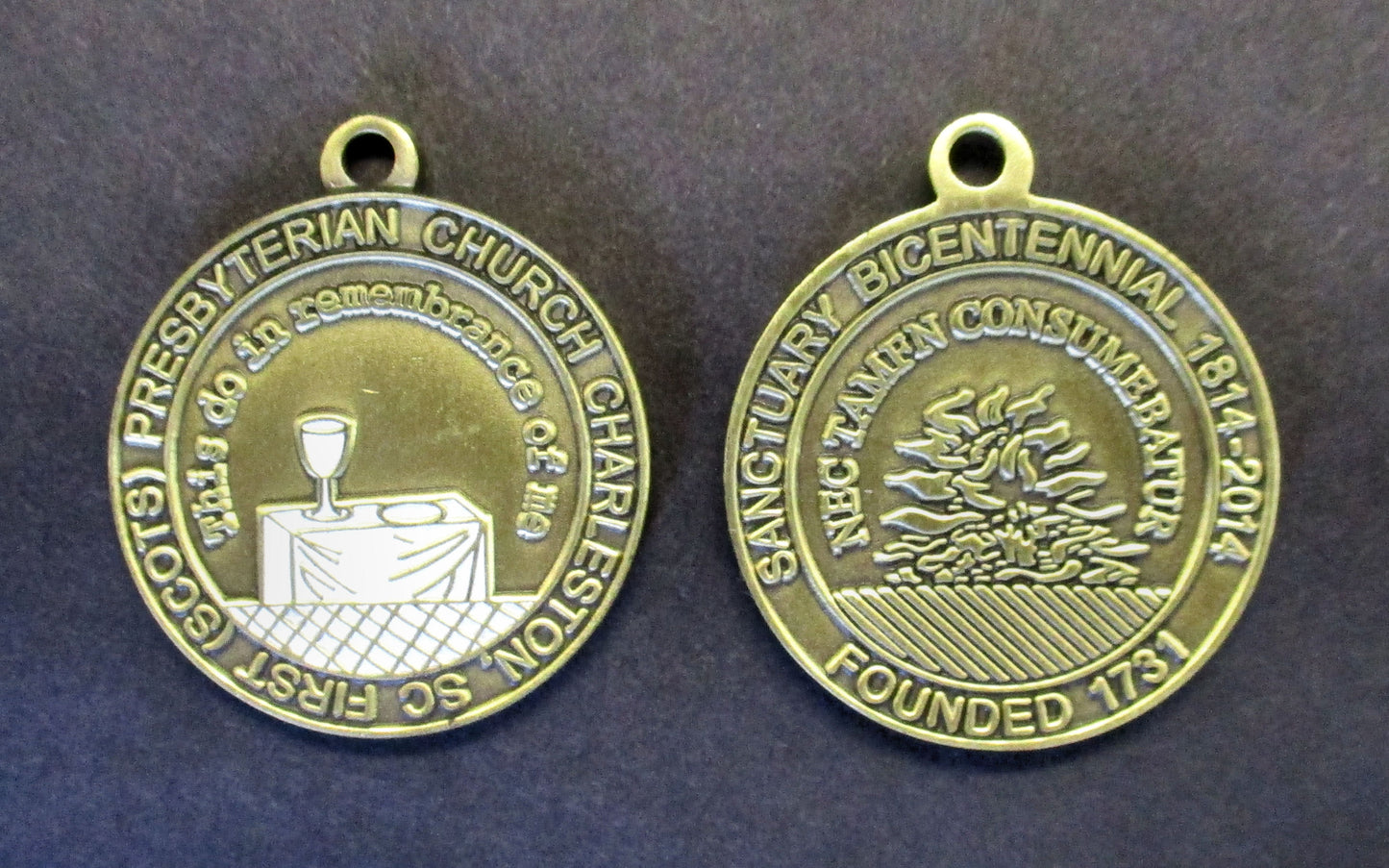The Village Museum
First (Scots) Presbyterian Church, Charleston, SC Commorative Communion Token
First (Scots) Presbyterian Church, Charleston, SC Commorative Communion Token
Couldn't load pickup availability
Gifted to the Museum, this Communion Token was struck in 2014, to commemorate the Bicentennial Anniversary of the Church Sanctuary (1814-2014). The coin is a 1" diameter with bale for hanging. Raised detailing, in white, on face of coin. New, in protective wrapper.
Communion tokens were a familiar feature of Presbyterian worship in past centuries. John Calvin suggested that tokens be used "to prevent the profanation of the Lord's Table."
Huguenots in France and Presbyterians in Scotland began following Calvin's advice by 1560. Only those instructed in the Reformed faith were given tokens for admission to the Lord's Supper, and no one without a token was then allowed to take communion.
The use of tokens took deep root in Scotland and Northern Ireland, and was brought to colonial America along with other communion practices from the "old country." Most colonial congregations celebrated the Lord's Supper once or twice a year as part of a three to five day series of services called the "communion season," a forerunner of later camp meetings and revivals. Often several congregations joined together and, because of the large crowds, held services outdoors.
A day or more before the communion service, the minister and elders questioned the members of their congregation about their beliefs and behavior. Only those who showed adequate knowledge of the faith and were deemed to be living upright lives received tokens. During the communion service, communicants came forward and sat at long tables where they turned in their tokens and received the elements.
Most tokens were cast or stamped out of lead or pewter, but other materials were used including brass, copper, silver, nickel, zinc, ceramic, wood, printed paper, and later even celluloid.
Share


